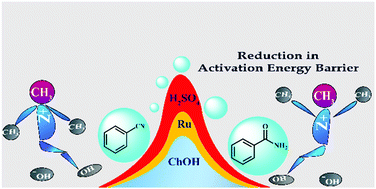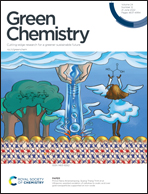Hydrogen bond mediated conversion of benzenenitriles and arylacetonitriles to amides: an “on/in-water” reaction strategy†
Abstract
Owing to the myriad of applications that amides have, hydration of nitriles has emerged as one of the most preferred atom-efficient synthesis methods. Being kinetically slow, this strategy requires some efficient catalysts. Herein, we discovered choline hydroxide as an environmentally benign, metal-free and inexpensive catalyst for the hydration of aromatic and heteroaromatic nitriles on/in water with excellent yields. All the reactions proceeded under mild/moderate conditions, facilitated by the hydrogen bonds between the catalyst and the reactant or intermediate. Density functional theory (DFT) studies were used to propose the plausible reaction mechanism, which was further corroborated with kinetics measurements using quantitative 19F NMR spectroscopy, thereby revealing the presence of H-bond mediated catalysis which brought down the activation energy barrier even lower than those in previous reports on using H2SO4 or Ru(OH)x/Al2O3 as catalysts. This work offers an “on/in-water” reaction strategy for the efficient hydration of nitriles and will pave the path towards novel routes for the commercial synthesis of amides.



 Please wait while we load your content...
Please wait while we load your content...